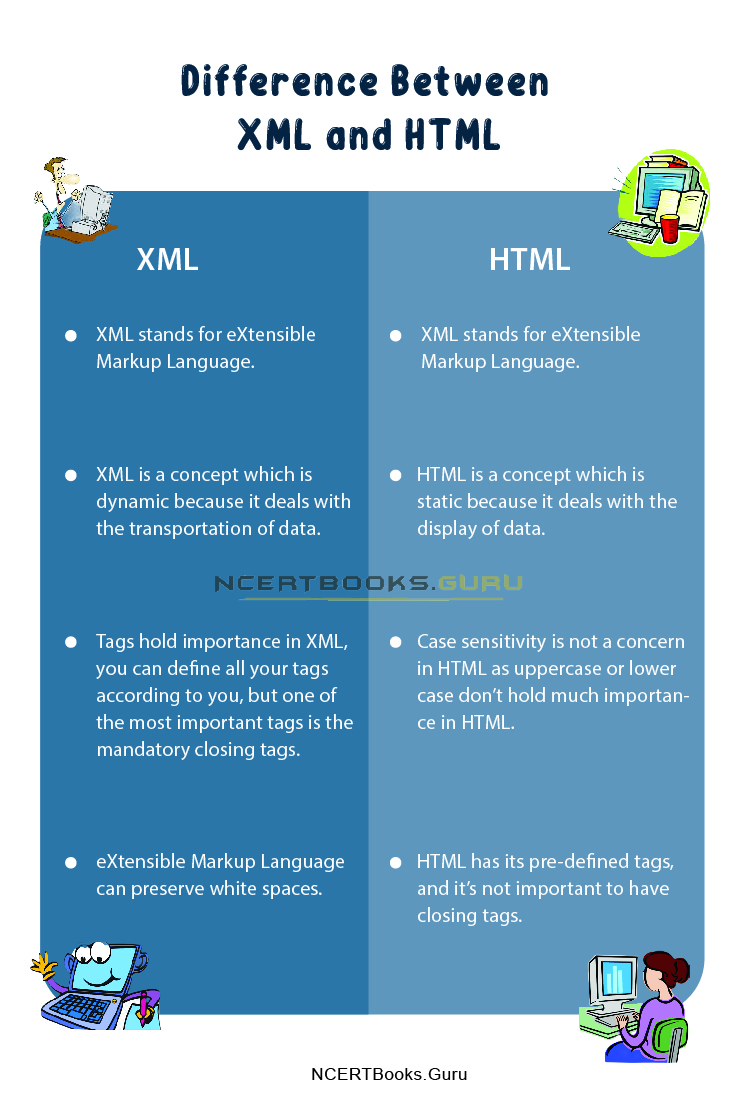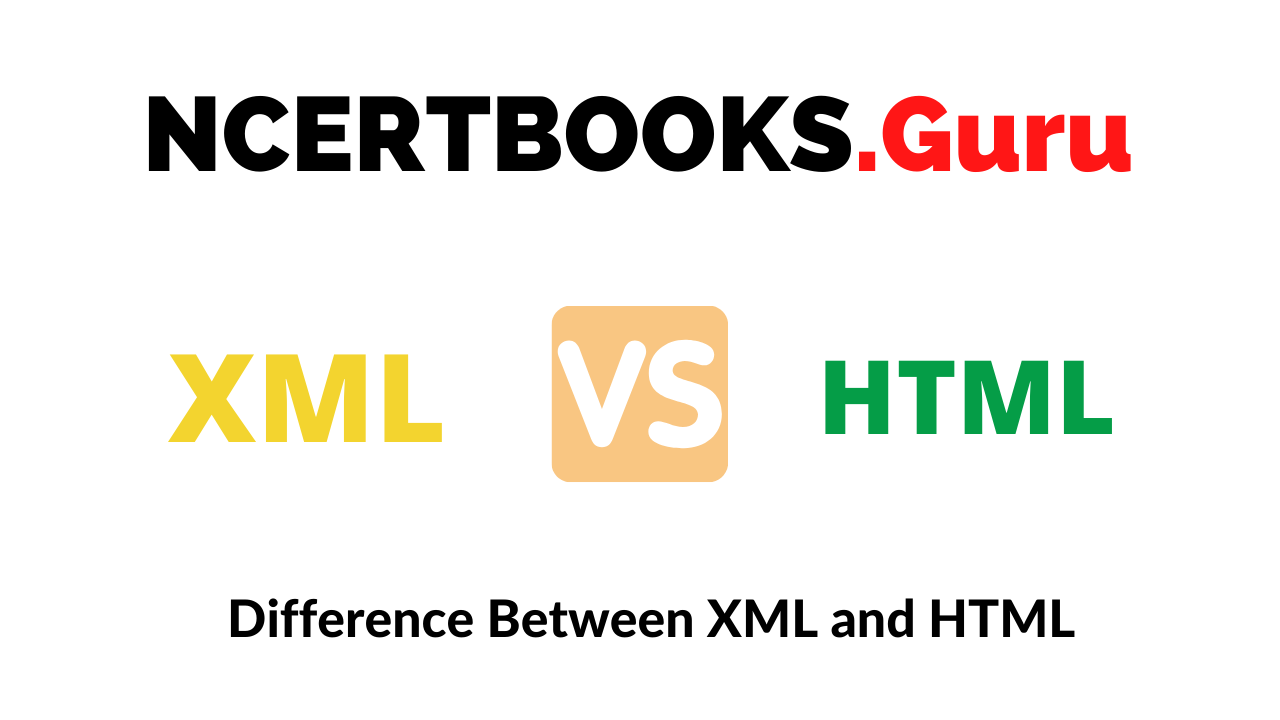Difference Between XML and HTML: We often come across XML and HTML, but do we know the meaning and the difference between the two terms. This article helps you understand and comprehend the meaning and key differences between XML and HTML terms. One of the common things between XML and HTML is that both are used to create web pages and web applications.
You can also find differences between articles on various topics that you need to know. Just tap on the quick link available and get to know the basic differences between them.
What is the Difference Between XML and HTML
XML is a concept which stands for eXtensible Markup Language. It is through this computer application that users can transport and save data. In XML, the focus doesn’t lie in displaying the data or the appearance of the data.
HTML is a concept that stands for HyperText Markup Language. It is a computer programming language. HTML helps make the data more interactive with the help of multiple formatting features.

Difference Between XML and HTML
The key differences between XML and HTML are as follows:
| XML | HTML |
| XML stands for eXtensible Markup Language.
The concept of XML deals with the transportation and saving of data. XML is a concept which is dynamic because it deals with the transportation of data. Case sensitivity is a concern in XML as both uppercase and lowercase need to be considered while coding. Tags hold importance in XML, you can define all your tags according to you, but one of the most important tags is the mandatory closing tags. eXtensible Markup Language can preserve white spaces. XML is a content-driven concept, and there aren’t many features available for formatting. Each small error matters in eXtensible Markup Language as it can change the outcome. An eXtensible Markup Language, the size of the document can be large, and the document’s size is never an issue. eXtensible Markup Language is not a presentation language or a programming language. XML enables the transportation of data from the database and the related applications. eXtensible Markup Language helps with the elements and attributes, and conventions express objects. |
HTML stands for HyperText Markup Language.
The concept of HTML deals with the appearance of data and enhancing the appearance of the text. HTML is a concept which is static because it deals with the display of data. Case sensitivity is not a concern in HTML as uppercase or lowercase don’t hold much importance in HTML. HTML has its pre-defined tags, and it’s not important to have closing tags. White spaces are not preserved in HyperText Markup Language. HTML is a concept which is presentation driven, and one of the most important aspects is how the data appears. The small and irrelevant mistakes made in HTML don’t matter, and you can achieve the outcome with the errors In HyperText Markup Language, there are no large documents, and the syntax is important to achieve the best-formatted output. HyperText Markup Language is a presentation language. HTML is helpful to showcase the design of a web page the way it is displayed on client-side. HyperText Markup Language offers native support. |
